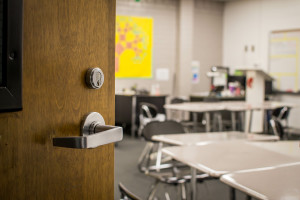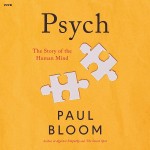I’ve written frequently over the years about the effects of classroom decoration on learning.
The headline is: althought many teachers have been trained to DECORATE, those decorations can distract students and thereby reduce learning.
We’ve tested this question for students from kindergarten to college.
We’ve tested them in different disciplines.
Heck, we’ve even tested them over very long periods of time (15 weeks!).
Sure enough: students don’t get used to decorations. Instead, they continue to be distracted and to learn less.
To be clear: I don’t think classrooms should be utterly sterile. But, I do think that research suggests we should take a “less is more” approach to decoration.
This set of findings raises an important corollary: are there other kinds of distraction that should worry us?
How about: distractions from other students…
Experiments Past
Enthusiasm for open classrooms began — I believe — in the 1960s and ’70s.
The basic ideas are:
Philosophically speaking: open classrooms feel less authoritarian — more student-centered than teacher-centered, and
Pedagogically speaking: they allow for a greater variety of combinations and collaborations — across grades, for instance.
The potential hazards, of course, are DISTRACTION. Having all those people and all that noise might make learning much harder.
Of course, this question isn’t easy to research. To do so, we would need…
… large groups of students who
… spend substantial learning time in both environments, and
… measurements that track their relevant academic progress.
Honestly: that’s A LOT to ask of a study.
Crunching the Numbers
I have good news!
A group of scholars in Australia have undertaken just such a study, looking at 7-10 year-old students in several schools.
In this study, researchers tracked classes that switched from open to enclosed to open classrooms (or, the other way around) over three terms.
The measurement of interest: reading words per minute.
Of course, this measurement makes good sense. We teachers REALLY CARE how well our students can read. And this particular measurement correlates with all sorts of academic outcomes.
So, what did the research team find: The envelope please….
Fully two-thirds of students improved more in enclosed classrooms than in open classrooms.
For some students, the classroom difference didn’t matter.
For a few — those with especially good attention, and/or academic background — the open plan resulted in greater improvement.
Those seem like impressive numbers.
Final Thoughts
I’ve looked around for research that contradicts this finding (a habit of mine), and so far I haven’t located anything persuasive. (If you know of such a study, please send it my way!)
Truthfully, I haven’t found lots of research in this field at all — many studies date from the ’70s and ’80s.
In brief, I think we have one very compelling data point. In this study, open classrooms reduce learning for most students, especially those who most need help in school.
If that result holds up with further research, we should be strongly inclined (in most circumstances) to teach students in the self-contained classrooms that foster learning.




